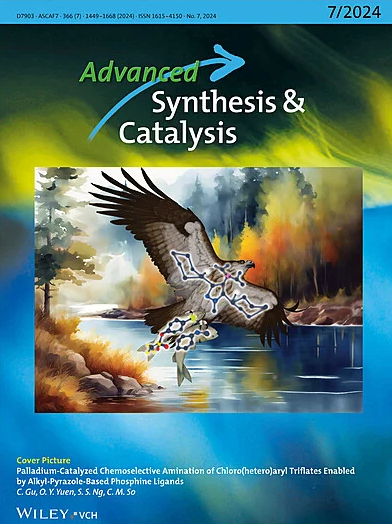Charge Controlled Engineering: Constructing Built-in Electric Fields at CoCu-ZIF/Cu3P-GDY Interfaces for Enhanced Photocatalytic Hydrogen Evolution
IF 4
2区 化学
Q2 CHEMISTRY, APPLIED
引用次数: 0
Abstract
Rational design of interfacial electric fields in nanostructures for accelerated photogenerated carrier transfer and separation. First, Cu+-mediated self-assembly engineering narrows the bandgap of ZIF-67 while extending the light absorption range of CoCu-ZIF. Furthermore, hierarchical architecture is constructed to incorporate the cocatalyst Cu3P-GDY. The staggered energy levels in the resulting CoCu-ZIF/Cu3P-GDY composite generate a strong driving force. Comprehensive characterization, including density functional theory calculations and Mott–Schottky analysis, confirm the formation of an S-scheme heterojunction between GDY and CoCu-ZIF. Cu3P acts as an electron bridge to promote the directional transfer of photogenerated carriers driven by interfacial electric fields. Differential surface photovoltage signals demonstrate that the robust interfacial electric field enables efficient carrier separation in the CoCu-ZIF/Cu3P-GDY composite. This work establishes a new paradigm for enhancing catalytic performance through broadened light absorption and rationally engineered interfacial electric fields.

电荷控制工程:在CoCu-ZIF/Cu3P-GDY界面上构建增强光催化析氢的内置电场
加速光生载流子转移和分离的纳米结构界面电场的合理设计。首先,Cu+介导的自组装工程缩小了ZIF-67的带隙,同时扩大了CoCu-ZIF的光吸收范围。此外,还构建了含Cu3P-GDY共催化剂的分层结构。CoCu-ZIF/Cu3P-GDY复合材料的交错能级产生了强大的驱动力。综合表征,包括密度泛函理论计算和Mott-Schottky分析,证实了GDY和CoCu-ZIF之间形成了s型异质结。Cu3P作为电子桥,在界面电场的驱动下促进光生载流子的定向转移。差分表面光电压信号表明,强大的界面电场使CoCu-ZIF/Cu3P-GDY复合材料中的载流子有效分离。本研究建立了一种通过扩大光吸收和合理设计界面电场来提高催化性能的新范式。
本文章由计算机程序翻译,如有差异,请以英文原文为准。
求助全文
约1分钟内获得全文
求助全文
来源期刊

Advanced Synthesis & Catalysis
化学-应用化学
CiteScore
9.40
自引率
7.40%
发文量
447
审稿时长
1.8 months
期刊介绍:
Advanced Synthesis & Catalysis (ASC) is the leading primary journal in organic, organometallic, and applied chemistry.
The high impact of ASC can be attributed to the unique focus of the journal, which publishes exciting new results from academic and industrial labs on efficient, practical, and environmentally friendly organic synthesis. While homogeneous, heterogeneous, organic, and enzyme catalysis are key technologies to achieve green synthesis, significant contributions to the same goal by synthesis design, reaction techniques, flow chemistry, and continuous processing, multiphase catalysis, green solvents, catalyst immobilization, and recycling, separation science, and process development are also featured in ASC. The Aims and Scope can be found in the Notice to Authors or on the first page of the table of contents in every issue.
 求助内容:
求助内容: 应助结果提醒方式:
应助结果提醒方式:


